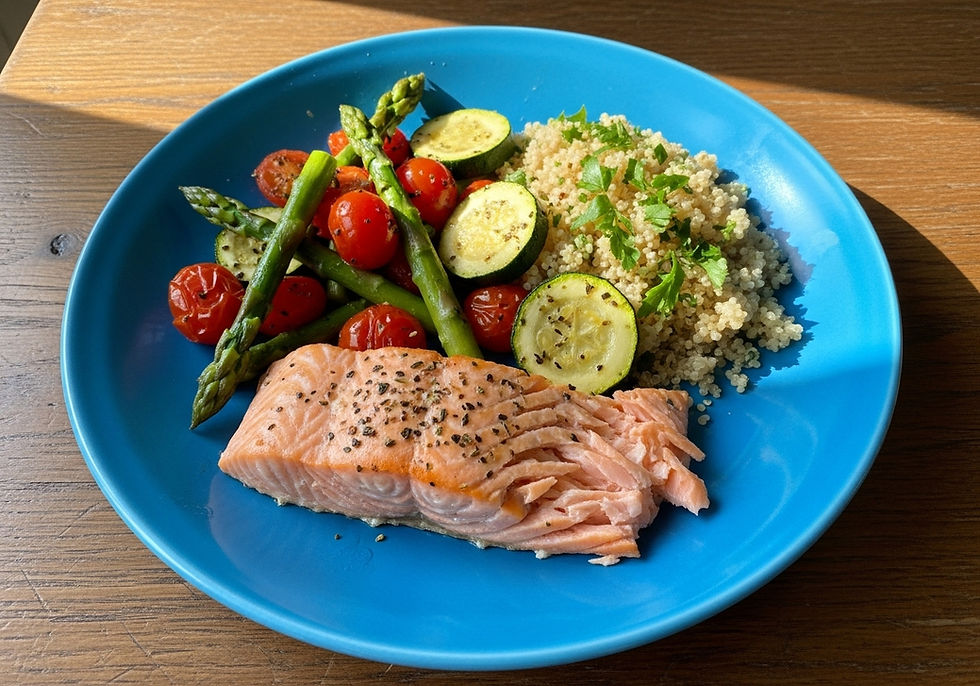Supporting People with Dementia to Eat Well
- Claire
- Aug 19
- 2 min read
Updated: Oct 28
Mealtimes are about much more than just nutrition, they are an essential part of wellbeing, social connection, and daily routine. For people living with dementia, however, traditional approaches to meals can sometimes be overwhelming.
In many care settings, a tray with a main course and dessert is simply placed in front of the person, often alongside multiple drinks. For someone with dementia, this can be confusing and stressful. The combination of too much choice, too many items, and a noisy environment can make eating feel like a challenge rather than a pleasure.
Keeping Meals Calm and Manageable
A key part of supporting good nutrition is creating a calm and focused environment. Reducing noise and distractions can help the person concentrate on their meal. Simple adjustments, like serving one dish at a time or limiting the number of drinks and utensils on the table, can make a big difference.
Presentation Matters
How food is presented can also have a significant impact. Bright, contrasting colours on the plate can make it easier for someone with dementia—or visual impairments—to identify what’s on offer. Small, thoughtfully arranged portions can feel more approachable than a tray overloaded with food.

Maintaining Independence
Allowing someone to eat for themselves, whenever they are able, preserves dignity, self-confidence, and motor skills. Feeding someone who can manage on their own can inadvertently reduce their independence and sense of accomplishment, so patience and encouragement are key.
Encouraging Social Connection
Mealtimes are also an opportunity for social engagement. Sharing meals with others, whether family, friends, or a carer, can encourage eating, stimulate conversation, and provide a sense of routine and belonging. At Thrive, we make it a priority to join in with meals and turn them into a positive, sociable experience rather than a stressful task.
Small, Meaningful Adjustments
Other strategies that can help include:
Offering favourite foods that bring comfort and familiarity.
Providing meals in bite-sized portions to make eating easier.
Maintaining a relaxed pace, giving time for each course without pressure.
Using contrasting colours and thoughtful presentation to aid recognition.
Encourage them to be a part of the process, whether that's deciding what to eat or helping to prepare it.
At Thrive Homecare, we understand that good nutrition is about more than filling plates, it’s about creating a supportive, enjoyable, and meaningful experience. By approaching mealtimes with care, attention, and creativity, we can help the people we support to eat well, feel comfortable, and enjoy their day.




Comments